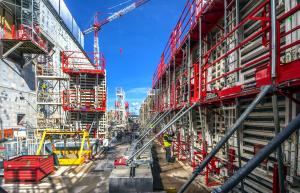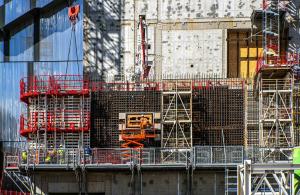Work resumes
The energy-producing plasmas in ITER will be fuelled in equal measure by the hydrogen isotopes deuterium and tritium. Deuterium is a stable element that industry has produced routinely since the 1940s; tritium on the other hand is rare, expensive and slightly radioactive and, for all these reasons, must be treated with extreme care and precaution. In the ITER installation, a whole building will accommodate the different systems and equipment that store, handle and recycle this precious element.
In late 2018, following ITER Council approval of the updated project schedule and a staged approach to full power operation, major civil works in the Tritium Building were put on hold in order to focus the workforce on the Tokamak and Diagnostics Buildings.
While the Tokamak Building was being readied for machine assembly and plant equipment was being installed in the Diagnostics Building, work was frozen at the Tritium Building at level 1 (L1). Activity has now resumed and the four levels that remain to be erected (L2 through L5) should be completed in the spring of 2023.
Most of the functions of the Tritium Building are directly linked to the full-power operation of the ITER Tokamak and, as such, will not be needed before 2035. However, the building also accommodates equipment that must be operational for First Plasma, such as the gas injection system that will feed hydrogen to the vacuum vessel, or components that are part of the HVAC, cooling system, vacuum pumping systems.
Also, although they will not be needed during the first phases of machine operation, several "captive" components such as manifold segments for the neutral beam injection or disruption mitigation systems must be installed before construction progresses.
The civil work challenges for the Tritium Building are similar to those of the Tokamak Building, with areas where steel reinforcement will be exceptionally dense. The difference is in the interior design: the Tritium Building is a house of many rooms (300 in total), which means there will be many inside walls to build and close to 5,000 cubic metres of concrete to pour.



